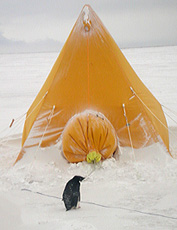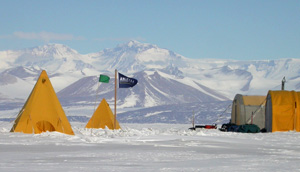Stars and STEM Stories
GLOBE Partner Expedition to Antarctica: Looking Back in Time to See the Future
Earth's climate is changing, with thawing glaciers and melting of the sea ice shrinking at rates that are occurring far quicker than climate models have predicted. A growing body of knowledge indicates that the warming of the air near the surface and the melting of the ice are due to increased concentrations of greenhouse gases such as CO2 in our atmosphere.

From October through December of 2008, an International Polar Yearexpedition called Offshore New Harbor will image sediments located below the sea floor that were deposited when the Earth was transitioning from a Greenhouse World (>34 million years ago, Ma) to an Icehouse World (34 Ma to Today). This project is part of the ANDRILL Program ANtarctic DRILLing, a multinational initiative with the objective to recover stratigraphic core records for the use of interpreting Antarctic's climatic, glacial, and tectonic history for the past 50 Ma. The expedition team will include scientists, students, and a schoolteacher who will live on the sea ice while collecting data that will seismically image the sediments that lie beneath the sea floor in the New Harbor area. Using new technology, this expedition promises to explore undiscovered country by imaging these sediments that were deposited across the Greenhouse World to Icehouse World transition (55 - 25 Ma). The objective of this expedition will be to locate the optimal site to drill these sediments in the near future.

A number of educational activities are planned while on the ice. An exciting educational opportunity will be our collaborative efforts with U.S. GLOBE partner Dr. Allan Ludman of Queens College in Flushing, New York, in which meteorological data will be collected while out at the remote field camp in Antarctica, and data will be entered into the GLOBE Web site for use in student research.
To learn more, visit the Offshore New Harbor Expedition Web site. For information about how the findings of the McMurdo Expedition will benefit GLOBE student research, read the recent article from the Queens College Newsletter.
15 August 2008





